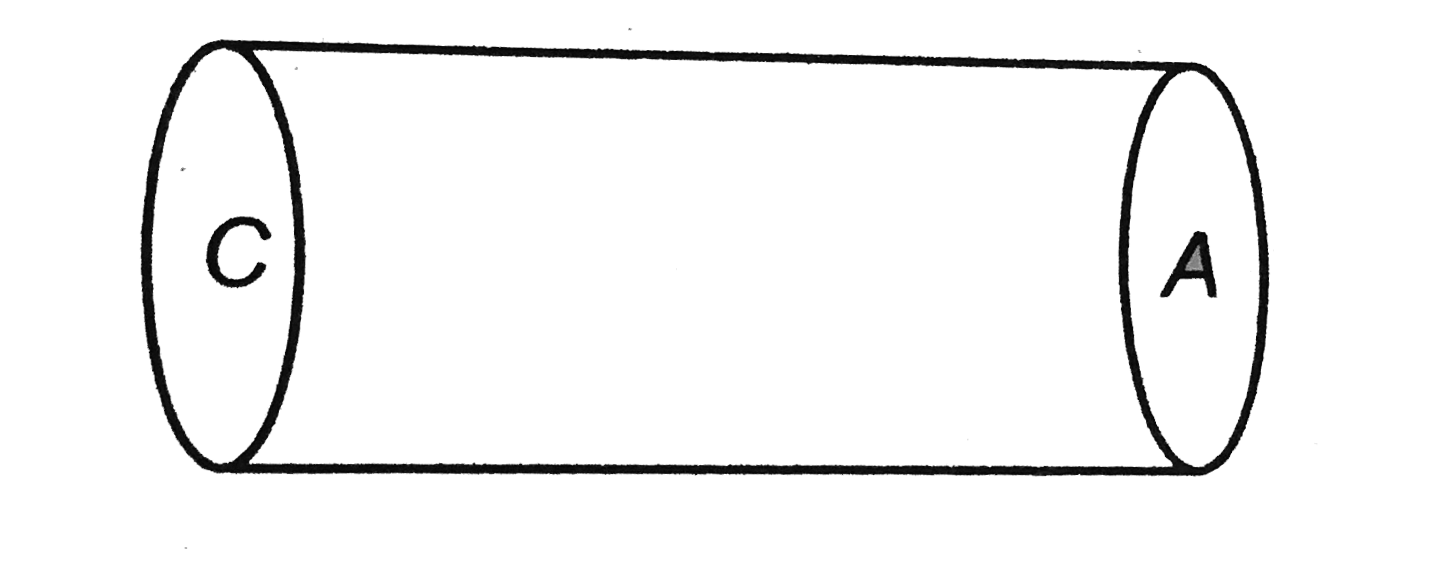Units of electric flux are
volt-m
volt-m^3
The correct Answer is:C
To determine the units of electric flux, we can follow these steps:
Step 1: Understand the Definition of Electric Flux
Electric flux (Φ) is defined as the product of the electric field (E) and the area (A) through which the field lines pass. Mathematically, it is expressed as:
Φ=∫E⋅dA
Step 2: Identify the Units of Electric Field
The unit of electric field (E) is volts per meter (V/m).
Step 3: Identify the Units of Area
The unit of area (A) is square meters (m²).
Step 4: Combine the Units
To find the unit of electric flux, we multiply the unit of electric field by the unit of area:
Unit of Electric Flux=Unit of Electric Field×Unit of Area
Φ=(Vm)×(m2)
Step 5: Simplify the Units
When we multiply these units, we get:
Φ=V⋅m
Thus, the unit of electric flux is volts meter (V·m).
Step 6: Identify the Correct Option
From the options provided:
1. Newton meter square per coulomb square (N·m²/C²)
2. Newton per coulomb square meter square (N/(C²·m²))
3. Volt meter (V·m)
4. Volt meter cube (V·m³)
The correct answer is option 3: Volt meter (V·m).
Final Answer
The units of electric flux are Volt meter (V·m).
---
Electric flux (Φ) is defined as the product of the electric field (E) and the area (A) through which the field lines pass. Mathematically, it is expressed as:
Φ=∫E⋅dA
The unit of electric field (E) is volts per meter (V/m).
The unit of area (A) is square meters (m²).
To find the unit of electric flux, we multiply the unit of electric field by the unit of area:
Unit of Electric Flux=Unit of Electric Field×Unit of Area
Φ=(Vm)×(m2)
When we multiply these units, we get:
Φ=V⋅m
Thus, the unit of electric flux is volts meter (V·m).
From the options provided:
1. Newton meter square per coulomb square (N·m²/C²)
2. Newton per coulomb square meter square (N/(C²·m²))
3. Volt meter (V·m)
4. Volt meter cube (V·m³)
The units of electric flux are Volt meter (V·m).
Topper's Solved these Questions
- ELECTROSTATICSBook:DC PANDEY ENGLISHChapter:ELECTROSTATICSExercise:Level 1 Objective
Explore 82 Videos
- ELECTROSTATICSBook:DC PANDEY ENGLISHChapter:ELECTROSTATICSExercise:Level 1 Subjective
Explore 15 Videos
- ELECTROSTATICSBook:DC PANDEY ENGLISHChapter:ELECTROSTATICSExercise:Exercise 24.7
Explore 2 Videos
- ELECTROSTATIC POTENTIAL AND CAPACITORSBook:DC PANDEY ENGLISHChapter:ELECTROSTATIC POTENTIAL AND CAPACITORSExercise:(C) Chapter exercises
Explore 50 Videos
- GRAVITATIONBook:DC PANDEY ENGLISHChapter:GRAVITATIONExercise:All Questions
Explore 135 Videos
Similar Questions
The law goverening electrostatics is coulomb's law.In priciple coulomb's law can be used to compute electric field due to any charge configuation .In pracitce however it is a formidable task to compute electric field due to uniform charge distributions .For such cases Gauss proposed a theorem which states that
∮¯¯¯E.¯¯¯¯ds=qε0
where ds is an element of area directed across the outward normal for the surface at every point .The integral is called electric flux.Any convenient surface that we choose to evalute the surface integral is called the Gaussian surface.
The SI unit of electric flux is
View SolutionAssertion Magnetic flux and the electric flux have the same units.
Reason Flux passing throught a surface gives an idea about the field lines crossing that surface
View Solution
Knowledge Check
The SI unit of electric flux is
ANC−1m2BNCm−2CNC−2m2DNC−1m−2
The unit of electric field is not equivalent to
View SolutionThe SI unit of electric field intensity is
View SolutionUnit of electric power may also be expressed as :
View SolutionDefine electric flux. Write its SI unit. A charge q is enclosed by a spherical surface of radius R. If the radius is reduced to half, how would the electric flux through the surface change ?
View SolutionA hollow cylinder has a charge qC within it. If ϕ is the electric flux in unit of voltmeter associated with the curved surface B the flux linked with the plane surface A in unit of voltmeter will be

View SolutionA hollow cylinder has a charge qC within it. If ϕ is the electric flux in unit of voltmeter associated with the curved surface B the flux linked with the plance surface A in unit of voltmeter will be

View SolutionAn arbitrary surface encloses a dipole. What is the electric flux through this surface ?
View Solution